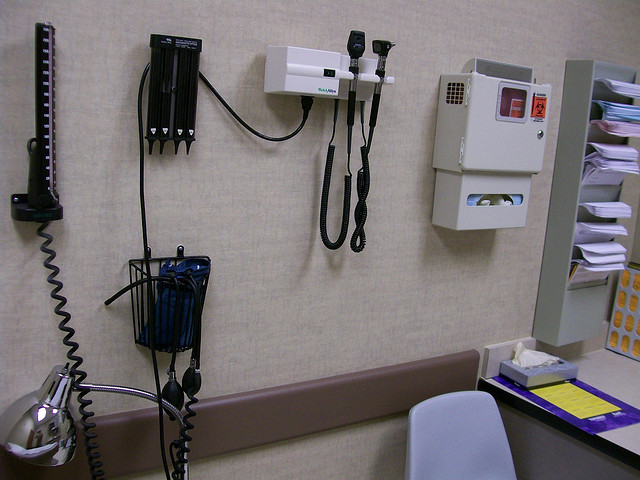If the unfamiliar creates anxiety, then a trip to the hearing specialist is especially stressful. While the majority of us have experience with the family physician and the local dentist, the visit to the hearing specialist could be a first.
It certainly would be useful to have someone teach you the process beforehand, wouldn’t it? Well, continue reading, because as you’ll see, the process of getting your hearing evaluated is almost always straight forward, comfortable, and pain-free — with parts that can actually be fun.
So here’s how it will go:
Just after you arrive at the office, you will check in with a staff member at the front desk who will give you some forms to fill out. Not long after handing in the forms, a hearing specialist will escort you into a room to get started on the hearing examination, which consists of four parts:
Part 1: Case History

The hearing specialist will start the process by getting to know you, your health related history, and your hearing loss symptoms. Preparing for this step is critical, because this is where you get to relay to the hearing specialist the particulars of your hearing loss, what you expect to gain from treatment, and your special hearing needs.
This portion is all about you: what do you want to attain with healthier hearing? Do you wish to play a music instrument again? Do you wish to be more active in work meetings? Do you want to be more energetic at social gatherings? The more you can reveal to your hearing specialist the better.
Next comes the testing.
Part 2: Otoscopy
The initial diagnostic test to be performed is called an otoscopy. An otoscope is used to visually explore the ear canal and eardrum to find if your hearing loss is connected with infections, earwax accumulation, or obstructions. If the cause of your hearing loss is something as uncomplicated as earwax accumulation, you could possibly start hearing better within minutes simply from professional earwax removal.
Part 3: Tympanometry
The second test is known as tympanometry, used to test the eardrum and middle ear. A gadget is inserted into the ear that will adjust the air pressure, evaluating how your ear reacts to different pressures.
To understand this test, you have to first know that hearing loss is categorized into one of two broad classes:
- Sensorineural hearing loss — this is the most common hearing loss. It is also defined as noise-induced hearing loss and it involves destruction of the nerve cells of hearing.
- Conductive hearing loss — this hearing loss results from clogging or obstructions that restrict sound transmission before the sound hits the nerve cells of hearing.
Tympanometry is a test that can help to rule out conductive hearing loss, to make certain that there are no blockages, infections, or middle-ear-bone problems. Conversely, Audiometry, which is considered next, will quantify sensorineural hearing loss.
Part 4: Audiometry
The last group of tests will be completed in a soundproof room. These tests are collectively known as audiometry and will calculate your hearing range and sensitivity. Audiometry is the best technique to calculate sensorineural hearing loss.
With the use of an audiometer, the hearing specialist will be ready to identify:
- Which frequencies you can hear well and which you have a difficult time with.
- The minimal decibel levels, at differing frequencies, at which you perceive sound.
- The precise measurements associated with your hearing loss (as recorded on an audiogram).
- Your capacity to understand speech, with or without background noise.
The test on its own, from your viewpoint, will be comfortable and uncomplicated. You will be presented with sounds and speech through headsets and will be asked to signal when you can hear the sounds by pushing a button or raising your hand.
Assessing results and planning treatment
Shortly after the testing is complete, your hearing specialist will review your results with you. If your hearing loss calls for medical or surgical treatment (due to infections or middle-ear-bone problems, for example), your hearing specialist can make the applicable referral.
If your hearing loss can profit from assistive listening devices or hearing aids, your hearing specialist will work with you to decide on the ideal option for you, your finances, your lifestyle, and your aesthetic concerns.
Pretty painless for a lifetime of better hearing, isn’t it?

